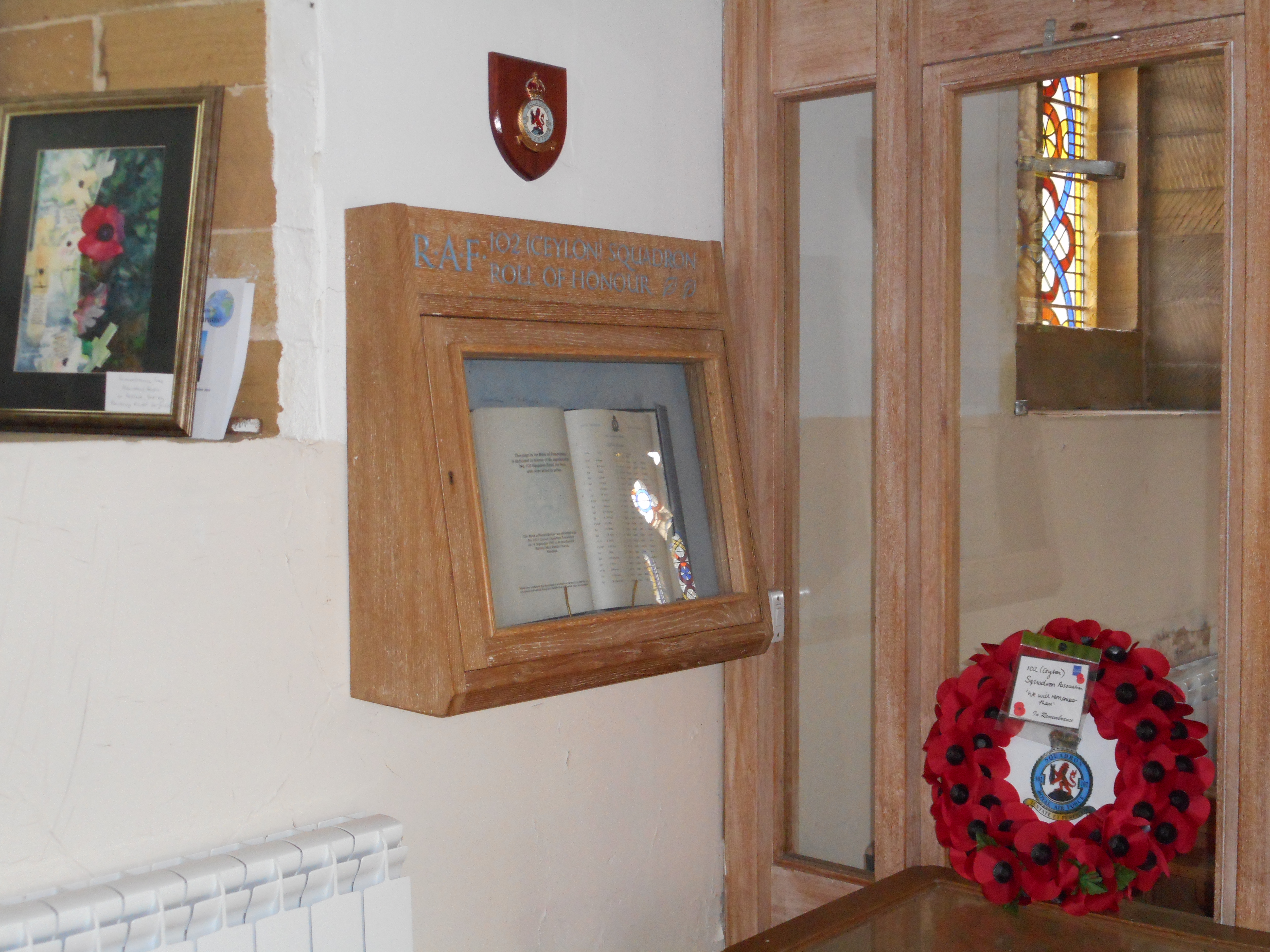Dunphy, Hugh Ashley
Personal Information
| Rank | P/O |
| Forename(s) | Hugh Ashley |
| Surname | Dunphy |
| Gender | M |
| Age | 20 |
| Date of Death | 05-01-1945 |
| Next of Kin | Son of Arnold Ashley Dunphy and Isabel Dunphy (née Hayward), of Regina, Saskatchewan, Canada. |
Aircraft Information
| Aircraft | Handley Page Halifax III |
| Serial Number | MZ796 |
| Markings | DY-M |
Memorial Information
| Burial/Memorial Country | Germany |
| Burial/Memorial Place | Hanover War Cemetery |
| Grave Reference | 6. A. 13. |
| Epitaph |
IBCC Memorial Information
| Phase | 2 |
| Panel Number | 158 |
Enlistment Information
| Service Number | J/95294 |
| Service | Royal Canadian Air Force |
| Group | 4 |
| Squadron | 102 (Ceylon) |
| Squadron Motto | Tenate et perficite (Attempt and achieve) |
| Trade | Air Gunner |
| Country of Origin | Canada |
Other Memorials
| Location | St. Catherine's Church Barmby Moor, East Yorkshire |
| Country | United Kingdom |
| Memorial Type | Roll of Honour in wall mounted wooden case, Sqn Badge above |
| Memorial Text | 102 (Ceylon) Sqn Roll of Honour and Sqn badge |
| Location | Pocklington Gliding Club, Pocklington Airfield, Easy Yorkshire |
| Country | United Kingdom |
| Memorial Type | Stylised Memorial with inscribed metal plaque |
| Memorial Text | Memorial to 102 (Ceylon) Sqn RAF and 405 (Vancouver) Sqn RCAF which served at RAF Pocklington during WW2 |
Miscellaneous Information
| Hugh was born on 5 April 1924 at Regina, Saskatchewan. His father was born at St. John, New Brunswick and was the Superintendent of Schreiber division of CPR and his mother was born at Winnipeg, Manitoba. He had a sister Isabel Louise and a brother Gordon (Lt. Gordon H. Dunphy. RCNVR, Kentville, Nova Scotia). Hugh attended Grosvenor School between 1932-1940 followed by Kelvin Tech High School 1940-1942 (Winnipeg). Hugh took part in skiing, football and swimming, his hobby being model aircraft building. When he left school he worked as an Apprentice Air Engineer for Canadian Pacific Airlines, Edmonton between 1942-1943. He also spent four months in 1942 as a temporary Timekeeper for Canadian Pacific Railway in Winnipeg. |
| Hugh enlisted on 22 April 1943. After initial training he embarked from Halifax on 29 April 1944 bound for the U.K. and arrived at 3(RCAF) PRC on 8 May 1944. He then went to 20 OTU on 6 June 1944, 41 Base 8 September 1944, and 102 Squadron on 20 December 1944. Sadly Hugh lost his life shortly after arrival on 5 January 1945. |
Commonwealth War Graves Commission
The National Archives
| Record of Events (Operational Record Book) AIR 27/811/2 |
| Summary of Events (Operational Record Book) AIR 27/811/1 |
Fellow Servicemen
Please note that this list gives all the losses aboard the quoted aircraft and occasionally these may have occurred on an earlier date when the aircraft was not itself lost. Please check the dates of death carefully.
Last Operation Information
| Start Date | 05-01-1945 |
| End Date | 06-01-1945 |
| Takeoff Station | Pocklington |
| Day/Night Raid | Night (55% moon) |
| Operation | Hannover. 664 aircraft, 31 losses (4.7%). Bombs fell throughout the city. 493 buildings were destroyed and 250 people killed. |
| Reason for Loss | Hit by flak and crashed SW of Mariensee, Germany |






